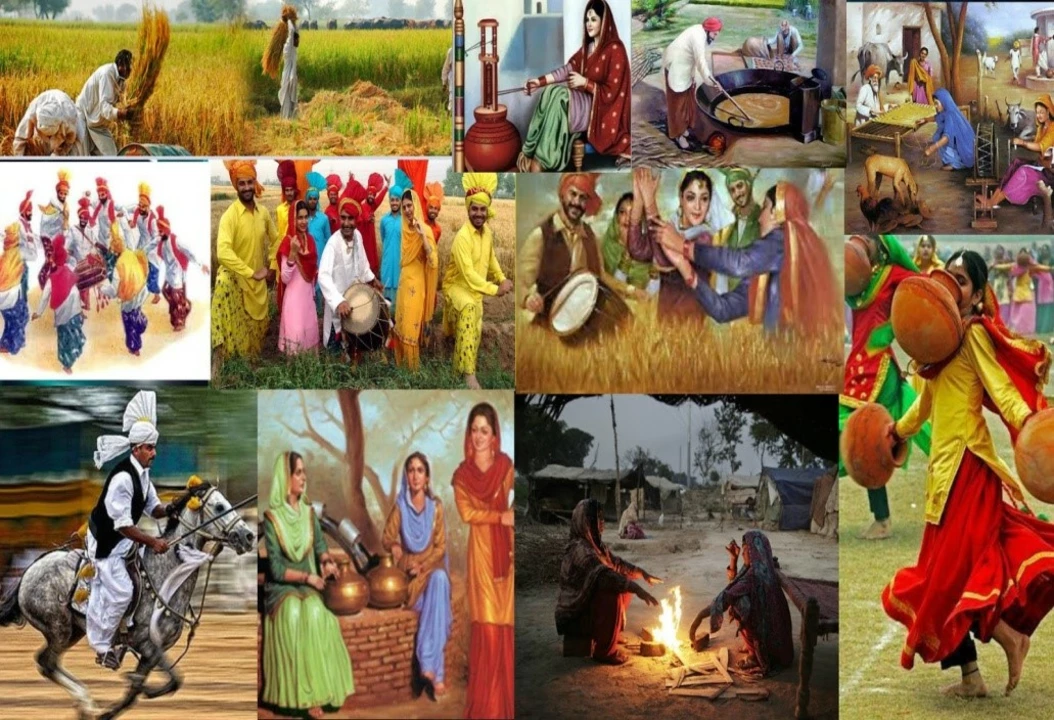Exploring the Cultural Diversity of India: A Look at Day-to-Day Life
India is a land of incredible diversity, with a range of cultures, religions, languages, and lifestyles all living side by side. For those exploring the country, it can be hard to comprehend life in India. What is day-to-day life like in this vast and fascinating nation?
India is a bustling, vibrant country where people are always on the go. Indians have a reputation for being busy and industrious, but this also means that there is never a dull moment. From the hustle and bustle of the cities to the peacefulness of the countryside, India is a land of contrasts.
Many of India’s cities are modern and cosmopolitan, with shops, restaurants, and entertainment venues catering to a variety of tastes. Street food is a common sight, and the range of regional cuisines can be overwhelming. From the spicy masalas of the north to the coconut-based dishes of the south, the range of flavors and textures is vast.
India is also a spiritual country, and religion plays a big part in day-to-day life. Hinduism is the predominant faith, and temples, mosques, and shrines can be found throughout the country. Religion is often intertwined with daily rituals, such as offerings to the gods, prayers, and the performance of religious ceremonies.
The family is an important part of life in India, with generations living together in extended families. Indians place a strong emphasis on respect for their elders, and children are taught to be obedient and hardworking. This strong sense of family is reflected in the day-to-day interactions of Indians, with a strong emphasis on courtesy and politeness.
Despite the country’s bustling cities, much of India is rural and agrarian. In rural areas, life is slower-paced, with people relying on traditional farming and animal husbandry for their livelihood. Villages are often self-sufficient, with people growing their own food and relying on their neighbors for support. Although the pace of life is slower, the people of India are still fiercely proud and independent.
India is a complex and fascinating country. From the vibrant cities to the peaceful countryside, the country offers a range of experiences and cultures. With its diverse population, India is a country where anything is possible. For those looking to explore the country, India offers a unique and unforgettable experience.
Navigating India's Unique Cuisine: A Guide to Day-to-Day Life in India
India is a vast and diverse country, with a wide range of cultures and customs. As such, the cuisine of India is also incredibly varied. From the cream-filled sweets of the north, to the spicy curries of the south, India has something for everyone. In this guide, we'll explore what day-to-day life is like in India, and how to navigate its unique cuisine.
Unique Regional Cuisines
As mentioned, India's cuisine is highly varied, as each region has its own unique culinary traditions. For example, in the north of India, you'll find rich, creamy dishes like butter chicken, made with a blend of spices and cream. In the south, however, the cuisine is much spicier, with curries and hot chutneys. Even within a region, you'll find variations in cuisine, as every state has its own specialty dishes.
Traditional Eating Habits
In India, traditional eating habits are still very much alive. Meals are often cooked from scratch, with fresh ingredients. Common staples include rice, roti (flatbread), and dal (lentils). Breakfast is usually quite light, often consisting of tea, paratha (flatbread fried in oil), or poha (flattened rice). Lunch and dinner are usually more substantial, and can include curries, rice, and various accompaniments.
Street Food
Street food is another integral part of India's culinary culture. From chaat (a type of savoury snack) to vada pav (a spiced potato patty in a bun), there is no shortage of delicious snacks to be found on the street. Street food is often very affordable, and is a great way to get a taste of local cuisine. However, it's important to be aware of hygiene standards, as street food can sometimes be of questionable quality.
Eating Out
If you're looking for a more formal dining experience, then there are plenty of restaurants to choose from. Indian food is popular around the world, and you can find many international chains in the major cities. For a more traditional experience, there are plenty of local restaurants, serving delicious Indian cuisine. From fine dining to casual eateries, there is something for everyone.
Cooking at Home
For those who prefer to cook at home, there are plenty of recipes available. Indian dishes are usually quite simple to make, and require few ingredients. Common spices include cardamom, cumin, turmeric, and coriander. These are used to create a variety of flavourful dishes, such as curries, dals, and biryanis. Once you have the basics down, you can start experimenting with different ingredients and spices.
Navigating India's Cuisine
By following the tips in this guide, you'll be able to navigate India's unique cuisine with ease. Whether you're in the mood for a spicy curry or a sweet dessert, India has something to offer. So don't be afraid to explore and try something new - you never know what culinary delights you might discover.
Finding Balance in India: A Look at the Spiritual Aspects of Day-to-Day Life
India is known for its spiritual and religious culture, which has been around for thousands of years. This culture is still very much alive in India today, and has a major influence on the day-to-day lives of its citizens. From yoga to meditation and Buddhism, there are many spiritual practices that people in India incorporate into their lives.
Yoga is one of the most popular and widely practiced spiritual practices in India. It is a practice of postures and breathing exercises that help to increase physical strength, flexibility, and mental clarity. It is believed to be a way to achieve balance and harmony in mind, body, and spirit. Many people in India use yoga as a way to relax, reduce stress, and improve their overall health and well-being.
Meditation is another widely practiced spiritual practice in India. The practice of meditation has been used for centuries to create a sense of calm, clarity, and peace. It has been found to reduce stress levels and improve mental wellbeing. People in India often use meditation as a way to connect with their inner selves and to find a sense of inner peace and balance.
Buddhism is another spiritual practice that is popular in India. Buddhism is a religion that focuses on the teachings of the Buddha, who taught that all human suffering is caused by ignorance and craving. Buddhists believe that by following the teachings of the Buddha, they can free themselves from suffering and achieve balance and harmony in their lives. Buddhists in India often meditate and practice mindfulness in order to reach a state of inner peace and balance.
In India, spiritual practices such as yoga, meditation, and Buddhism are used to help people find balance and harmony in their day-to-day lives. These practices are used to reduce stress, improve mental wellbeing, and create a sense of inner peace. By incorporating these spiritual practices into their daily lives, people in India are able to find the balance and harmony that they need to live a healthy and fulfilling life.

